The Forgotten Past ... Khalkhin Goal
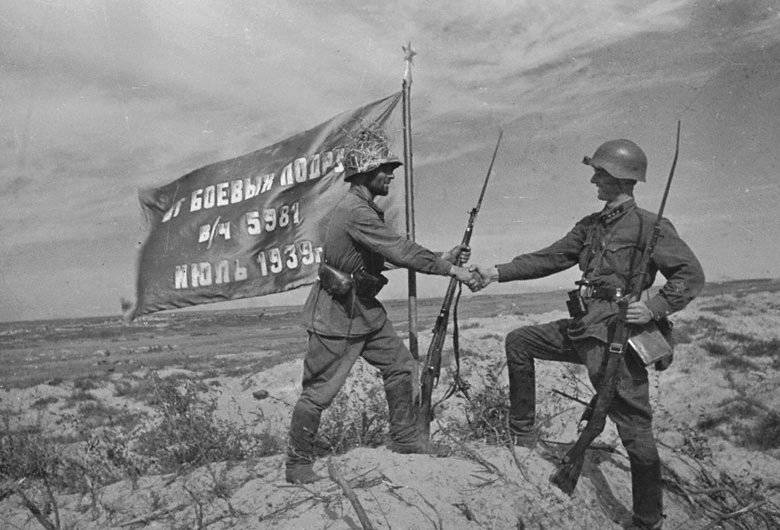
in savages, promoting the selection of the strongest and most agile,
but on civilized peoples, the influence is usually the most pernicious:
It leads to the mutual destruction of the best and bravest.
A. Fule
Unfortunately, domestic story Often ignores important events that descendants should remember. One of these historical facts, undeservedly excluded from school programs, is the war with Japan 1939 of the year. Meanwhile, to study this event is simply necessary in order to understand the reasons for Japan’s refusal to attack the Soviet Union during the fascist offensive. The territorial claims of this island country have long been presented and will continue to be made against Russia, China and a number of other countries, however, in order to correctly analyze the situation, one should be aware of such facts as the war on Khalkhin Gol.
Armed confrontation began long before the beginning of the onset of Nazi Germany in the Soviet Union. According to foreign historians, the conflict was triggered by Mongolian troops that repeatedly invaded Manchuria. Thus, war is called a conflict or an incident, and the Mongols are the aggressors. However, this view is far from the truth. There are also attempts to blame the Mongol nomads who allegedly want to occupy new pastures for violating the border, which, against the background of a cluster of professional thousands of army on the border, becomes not just improbable, but also ridiculous. Did Japan really fear the peaceful shepherds so much that it introduced more than fifty thousand soldiers and colossal volumes of military equipment to guard the border of the sovereign state of Manchukuo?
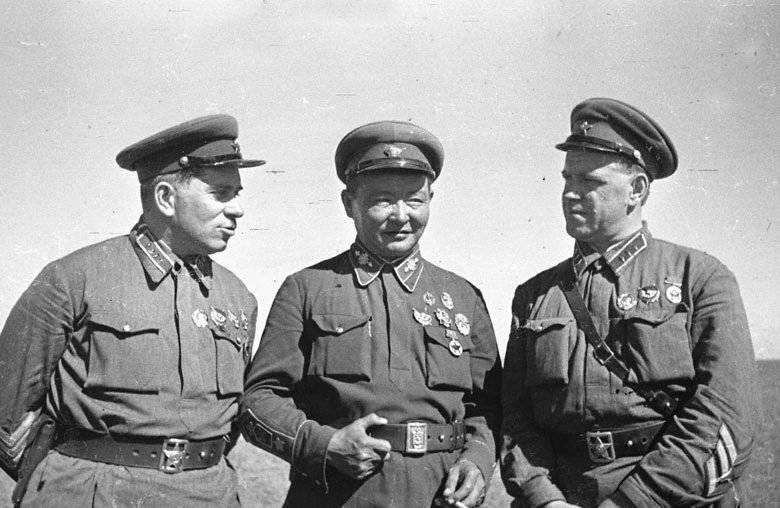
The background to this short war clearly shows that there could be no aggression on the part of Mongolia, but the Japanese were the initiators. Back in 1932, Japan occupied the Chinese territories and created the state of Manchukuo. Despite the fact that the state was nominally sovereign, Japan’s military contingent was constantly present on its territory, and the political leadership was exercised by the Japanese emperor. Claims on the lands of the MPR became apparent as soon as the puppet Manzhou-go announced a requirement to move the border twenty-five kilometers into the Mongolian territories. On the eve of the military clash, the Mongolian People's Republic appealed to the USSR for help in fighting the aggressors, as a result of which an allied treaty was signed, and the Red Army troops were brought to the disputed border. For a long time, the border zone was shelled by the Japanese, there were numerous attempts to capture prisoners. In addition, the Japanese were already in conflict in 1938, at a small lake called Hassan, which lasted two weeks and ended in favor of the Soviet forces. This fact reaffirms the hostile political course of Japan.
Neither of the attempts of the Mongolian military, which became the reason for the collision, can be out of the question either, because the first battle ensued on the island of Khalkhin Gol. This small piece of land belonged to Mongolia, but on May 8 Japanese soldiers tried to seize the island under cover of night. As a result of the fierce exchange of fire, the detachment retreated, suffering losses, including prisoners. About this incident there are documents in the archives. We even know the name of the prisoner: Takadzaki Ichiro, who was one of the attackers.
Three days later, a Japanese detachment brazenly invaded Mongolian territory, capturing the border post Nomon-Khan-Bur-Obo. The Mongols resisted, but due to numerical superiority, as well as more modern weapons could not do without the support of the allied forces. Soviet forces pulled together for quite some time, but after May 22, they began to successfully discard individual Japanese troops to the border. However, the army was actively replenished with new forces and equipment, and at the end of the spring month the Japanese command launched an offensive. The main objective of the first offensive of the Kwantung Army was to encircle the enemy forces, as well as to use their numerical superiority. The enemy’s maneuver forced the Allied forces to retreat, but the strategic plan of the Japanese command was not implemented. A huge contribution to the breakdown of the environment was made by the fierce struggle of the Vakhtin battery, and the Soviet counterattack again threw the aggressors to the border. The impotence of the Quatun army provoked the emperor's indignation, and the command decisively engaged Aviation, which is several times superior in technical indicators to Soviet weapons.
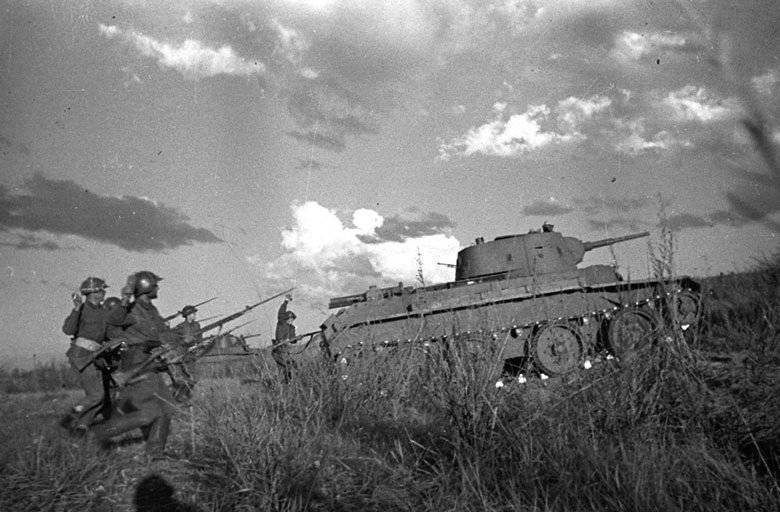
Initially, luck in the struggle for the sky remained on the side of the Japanese, but soon Smushkevich arrived in the war zone along with a small detachment of experienced pilots. A program was launched to train Soviet and Mongolian pilots in air combat tactics, and soon Japanese operations ceased to bring such success as before. Of particular note is the importance of these worthy people who have established effective training for young soldiers in such extreme conditions. Gradually, the Soviet aircraft began to intercept the initiative and the losses were already borne by the Japanese-Manchu forces.
For the first time the Soviet army commanded G.K. Zhukov. Unknown, but the budding commander immediately began to develop plans for confrontation. The correctness of his actions during the period of this war was repeatedly questioned by the Stalinist entourage. Beria expressed particular displeasure with his candidacy and even sent special observers to control. One of such officers was Mehlis, who began to persistently intervene in the affairs of the military leadership and was recalled back to headquarters. Zhukov’s decisions were indeed very bold, but luck remained on his side, and intuition did not fail.
In early July, Japanese forces seized Bain-Tsagan, which created a real threat to the Mongolian-Soviet defensive line. The battle for heights lasted for at least three days, during which both sides suffered significant losses, but the aggressors were again driven back to their former positions. The battle on this mountain went down in history as the Bain-Tsagan massacre, so terrible were the victims on both sides. After the crushing defeat of the group, the Japanese made new attempts at an offensive in the middle and at the end of the month, but were defeated.
The Japanese command did not intend to surrender, and decided to attack with the combined forces, which were planned to be assembled by the end of August. To the place of the conflict began to military equipment, and the date of the attack was scheduled for August 24.
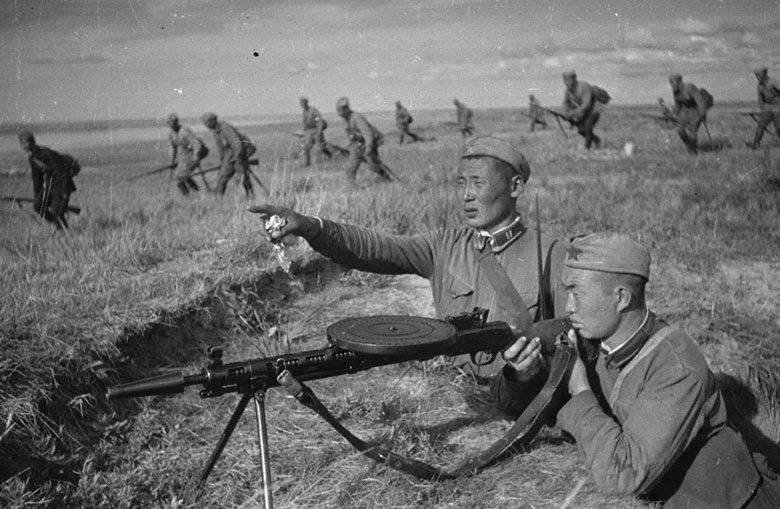
In this bloody war the leadership talents of Zhukov were especially clearly manifested. His plan to misinform the command of the Kvatunskoy army became the key to victory in this confrontation. The strategy was based on the deliberate dissemination of information that the Soviet army intends to launch an offensive only in the winter. To do this, the broadcast was littered with false messages with a simple encryption code, outfits for winter equipment and so on got into the enemy’s camp. Zhukov strictly forbade performing the necessary maneuvers in the daytime, and for a long time noises were specially created, to which the Japanese gradually stopped paying attention. The command of the Kwantung Army was so confident that the Allies would go on the offensive only in late autumn, which practically ceased to track the movement of units.
The commanders prepared three offensive units: the southern, central and northern, and a reserve was also formed. The offensive began suddenly for the enemy of August 20 and developed rapidly. It should be noted that the resistance of the Japanese soldiers was surprisingly stubborn. The courage and despair with which the rank and file fought is worthy of respect and memory. Fortifications surrendered only after the physical destruction of soldiers.
The offensive lasted until the last day of August and ended with the dismemberment of the Japanese invading army in two and the successive destruction of the southern, then the northern. 31 August, the territory of Mongolia was cleared from the invaders, but there was still time until the end of the war.
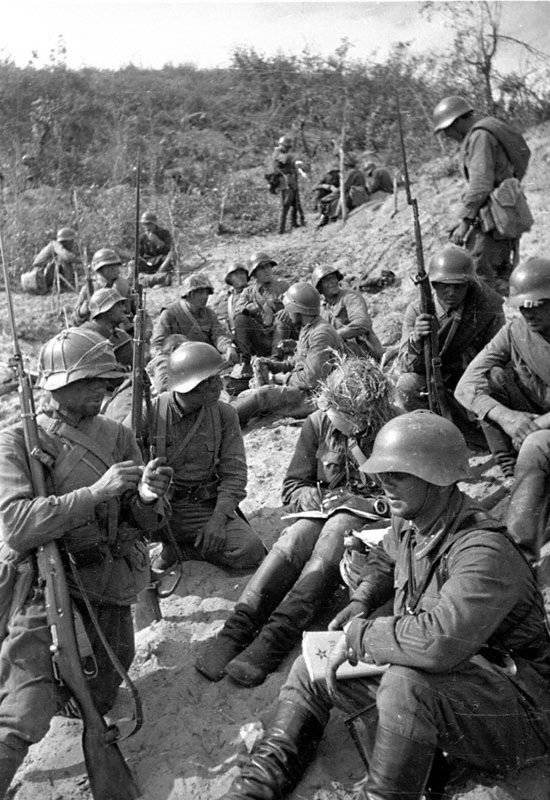
In early September, the command of the Japanese military forces again attempted to attack the Mongolian territories, but the terrible losses and a decisive rebuff of the Mongolian and Soviet soldiers threw off the attacking positions. The attempts of an air revenge failed four times in two weeks, during which the superiority of the Soviet pilots was obvious and unchanged. In the air battles for the first time, the Soviet side used rocket-type weapons. During the battle, only five Soviet cars destroyed 13 Japanese aircraft.
On September 15, the war ended with the signing of an armistice agreement, and the next day the fighting finally stopped.
Why did the Soviet command only push aside the Japanese invaders, but did not go on the attack on the territory of Manchuria? Best of all, the position of the command is explained by the words of Stalin about the danger of unleashing a long and costly war. Joseph Vissarionovich understood how dangerous the invasion of these territories was in the situation of a significant strengthening of Germany and the manifestation of its aggression. It was on this basis that the USSR willingly agreed to conclude an armistice, although the initiative came from the Japanese leadership.
Most of all, in this short war, the dedication of the Japanese soldiers, who were ready to die, but did not give up their positions, is surprising. The situation would be understandable if the Soviet army attacked the primordial lands of these people in order to capture and subdue, but it was the Japanese who acted as aggressors on the Mongolian border. The explanation of such mad rage can be found only in the active ideological propaganda, which was conducted since the late twenties in the country. Fanatic soldiers and officers were real weapons that were directed against our soldiers who defended the freedom of their allies. However, there was a practical sense in the actions of the Soviet leadership. The Soviet Union could not allow Japan to be dangerous and strong by that time to its borders. The actual conquest of China was evidence of the power of the Japanese forces, so the actions in Mongolia were of particular importance to the security of our country.
A brief, but very fierce and battle-filled war became a kind of rehearsal for Japan and the Soviet Union. The defeat of the aggressor in the clash forced Japan to abandon the invasion of the Soviet space during the period of fascist aggression, despite the insistent demands from Hitler. Subsequently, Japanese forces were sent to attack Pearl Harbor, which forced the United States to enter World War II and provide effective allied assistance to the Soviet troops. Britain and the United States were finally convinced that it was impossible to satisfy Japan’s territorial claims with only one aggression against the Soviets.
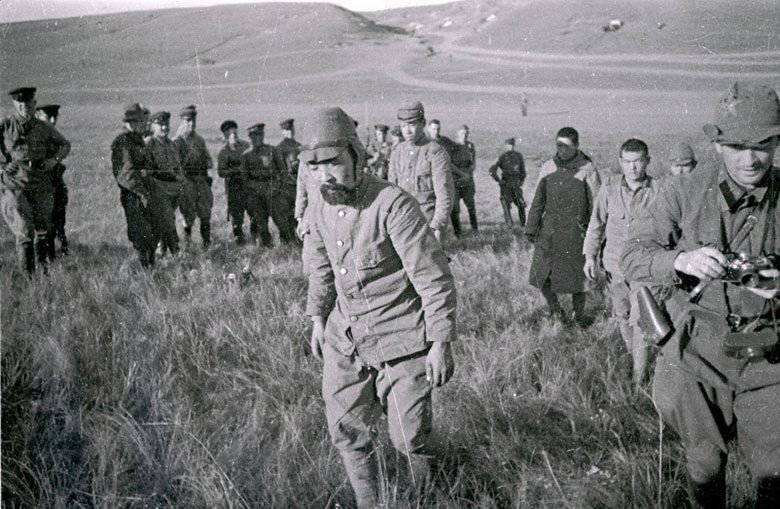
As a result of a military confrontation, the Soviet army received a talented and resourceful commander in the person of Zhukov, who could not be persecuted and repressed, unlike other capable military leaders. Many of the officers and privates received state awards.
The foreign press ignores the fact of aggression by Japan and tries to mention only the actual events, starting with the 1939 year. The position of historians who claim that the Quatun army was subjected to Soviet aggression is puzzling, since in itself its presence on the territory of Manchuria and claims to Mongolian lands are evidence of open occupation activities. The Soviet authorities did not claim the territory of foreign states, and served as defenders. Even more puzzling is the attempt to chant Japanese "heroes", while there is not a single mention of Soviet soldiers in such publications. All attempts to forget the true nature of the little-known war on Khalkhin Gol are nothing more than “rewriting” history into a more convenient form, which is so necessary for modern politicians in Europe and the USA.
Fighting on Khalkhin-Gol is an armed conflict that lasted from spring to autumn 1939 on the Khalkhin-Gol river in Mongolia near the border with Manchuria (Manchuku-go), between the USSR and Japan. The final battle took place in the last days of August and ended with the complete defeat of 6-th separate army of Japan. The truce between the USSR and Japan was signed on September 15 1939.
In foreign historiography, in particular in American and Japanese, the term “Khalkhin-Gol” is used only for the name of a river, and the military conflict itself is called a local “incident at Nomon-Khan”. "Nomon Khan" - the name of one of the mountains in the area of the Manchu-Mongolian border.
According to Soviet official sources, by the time of the final military operation, the 57th Soviet army was opposed by the 75th, well-equipped Japanese. Hundreds of aircraft were involved on each side, tanks and guns. And although diplomatic relations between the USSR and Japan were not broken, it was a real war with numerous losses for both sides.
The film uses a large number of chronicles, as well as comments of veterans participating in those events and historians.
Information